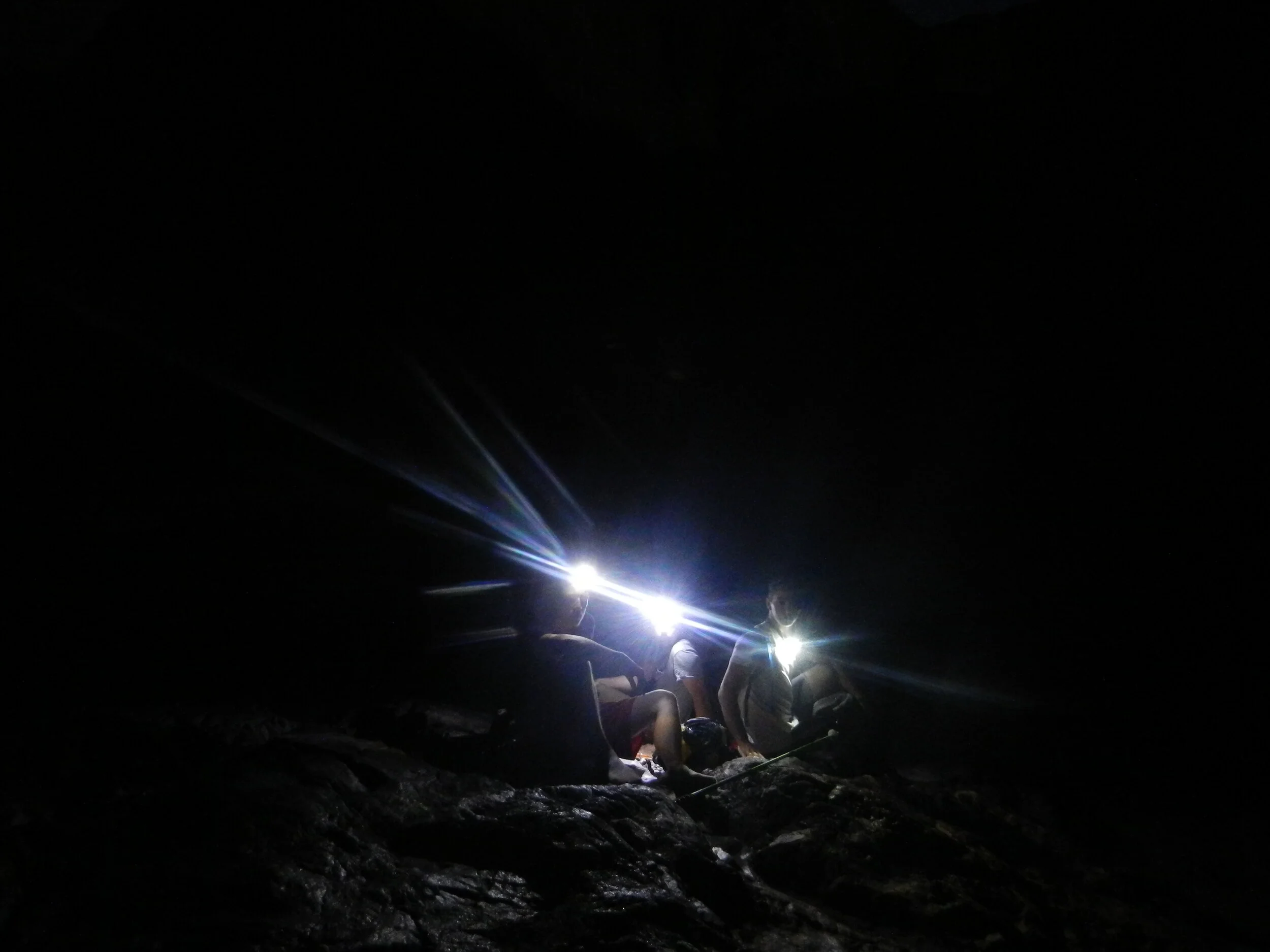










Your Custom Text Here
Park Number: 39/63
First Visited: June 22, 2013
The warning signs are everywhere: don’t attempt hiking to the base of the canyon and back in one day. The primary concern of such admonishments is the heat; people often forget the temperature difference between the base and the rim can vary by thirty degrees Fahrenheit. But we went anyway. We went with one reassuring advantage in our favor: we were hiking at night, using only the vibrant light of the circling supermoon. It was a dream trip, just me and two best friends starting on the South Rim and weaving down the Bright Angel Trail.
Getting into the canyon, to my mind, is much better than sharing the rim with the ogling tourists who all enjoy the posh amenities of the overdeveloped infrastructure. The rim offers wonder, but the inner canyon holds adventure.
We were on an adventure, seeing few others on our nine-hour journey, down and up, four-and-a-half-thousand vertical feet each way, dipping our blistered feet in that iconic Colorado River at the halfway point. It was at the river, however, that worry set in: Chad was puking and I wasn’t sure we were going to make it out. Going down is the easy part. Now we had to hike out.
We went slowly and cautiously, the puking periodic, completing the near-sixteen-mile hike at three in the morning. We were miserable, but it remains one of my favorite national park memories.
Eleven contemporary tribes have historic connections to the Grand Canyon, including the Havasupai, Hopi, Hualapai, Kaibab Band of Paiute Indians, Las Vegas Band of Paiute Indians, Moapa Band of Paiute Indians, Navajo Nation, Paiute Indian Tribe of Utah, San Juan Southern Paiute Tribe, the Pueblo of Zuni, and the Yavapai-Apache Nation.
Related Articles:
10 of America's Best Road Trips
10 Best Places to Stargaze in the U.S.
8 Great Winter Hikes in the U.S.
*Several images on this page by Steve Witmer
Park Number: 39/63
First Visited: June 22, 2013
The warning signs are everywhere: don’t attempt hiking to the base of the canyon and back in one day. The primary concern of such admonishments is the heat; people often forget the temperature difference between the base and the rim can vary by thirty degrees Fahrenheit. But we went anyway. We went with one reassuring advantage in our favor: we were hiking at night, using only the vibrant light of the circling supermoon. It was a dream trip, just me and two best friends starting on the South Rim and weaving down the Bright Angel Trail.
Getting into the canyon, to my mind, is much better than sharing the rim with the ogling tourists who all enjoy the posh amenities of the overdeveloped infrastructure. The rim offers wonder, but the inner canyon holds adventure.
We were on an adventure, seeing few others on our nine-hour journey, down and up, four-and-a-half-thousand vertical feet each way, dipping our blistered feet in that iconic Colorado River at the halfway point. It was at the river, however, that worry set in: Chad was puking and I wasn’t sure we were going to make it out. Going down is the easy part. Now we had to hike out.
We went slowly and cautiously, the puking periodic, completing the near-sixteen-mile hike at three in the morning. We were miserable, but it remains one of my favorite national park memories.
Eleven contemporary tribes have historic connections to the Grand Canyon, including the Havasupai, Hopi, Hualapai, Kaibab Band of Paiute Indians, Las Vegas Band of Paiute Indians, Moapa Band of Paiute Indians, Navajo Nation, Paiute Indian Tribe of Utah, San Juan Southern Paiute Tribe, the Pueblo of Zuni, and the Yavapai-Apache Nation.
Related Articles:
10 of America's Best Road Trips
10 Best Places to Stargaze in the U.S.
8 Great Winter Hikes in the U.S.
*Several images on this page by Steve Witmer